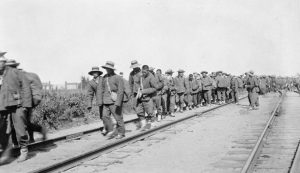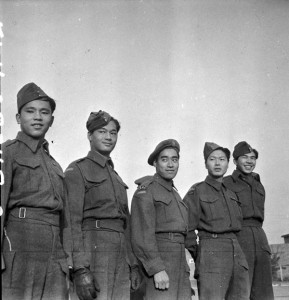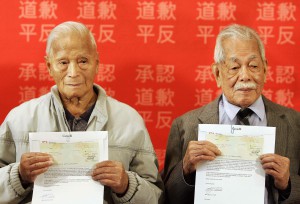Chinese-Canadian immigration history started when the first group of Chinese labourers arrived in the West Coast and then joined the workers building the Pacific Railway. Chinese history in Canada has been rather rough. This timeline will provide a general view of Chinese immigration in Canada.

Timeline of Chinese Immigration in Canada
1858 – Chinese miners arrive in British Columbia upon hearing that gold has been discovered in the Fraser Valley.
Early 1880s – Around 15,000 Chinese workers are recruited from China to complete the last leg of the Canadian Pacific Railway (CPR) in British Columbia.
1885 -The Chinese Immigration Act of 1885 requires that virtually all Chinese entering Canada pay a Head Tax of $50 per person.
Mid-1880s – With the completion of the CPR, some Chinese people move east to Alberta and beyond in search of job opportunities.
1900 – The federal government raises the Head Tax to $100.
1903 – The federal government raises the Head Tax to $500.
1923 – The Chinese Immigration Act of 1923 (also known as the Chinese Exclusion Act) nearly bans Chinese immigration to Canada.
1939-1945 – China and Canada are allies during the Second World War. Chinese Canadians fight with the Canadian armed forces and Chinese Canadian communities raise funds for the war effort.

1947 – The Chinese Exclusion Act is repealed after the Second World War. However, some restrictions on Chinese immigration to Canada remained. Chinese Canadians are not allowed to bring their children over 18 to Canada.
1957 – Douglas Jung becomes the first Chinese Canadian Member of Parliament.
1967 – The federal government revises the Immigration Act issuing one set of rules for all applicants from all countries. Immigration to Canada starts to increase.
1979 – Chinese Canadians organize nationally to protest the racist depiction of Chinese Canadians in a story called “Campus Giveaway”. The protest results in the creation of the Chinese Canadian National Council (CCNC).
1984 – The CCNC launches a campaign to obtain redress for Head Tax payers and their families. More than 4000 payers, widows and their families sign up with the CCNC.
1988 – David Lam becomes the Lieutenant Governor of British Columbia; he is the first Asian Canadian Lieutenant Governor of Canada.
1994 -The federal government refuses to grant compensation to Head Tax survivors and their families.
1997 – Following 150 years of British rule, Hong Kong is handed back to Chinese control. Immigration from Hong Kong to Canada intensifies. Meanwhile, the immigrants from Mainland China increased quickly. The construction of Chinese-Canadian has changed.
1998 – Vivienne Poy becomes the first Chinese Canadian appointed to the Senate of Canada.
1999 – Chinese Canadian Adrienne Clarkson is appointed Governor General of Canada.
2000 – CCNC backs a class-action suit against the federal government arguing that the Chinese Head Tax and Exclusion Act contravened the Charter of Rights and Freedoms.
2004 – A United Nations representative recommends that Canada strongly consider paying reparations for the Chinese Head Tax.
2005 – Chinese Canadian Normie Kwong is appointed Lieutenant Governor of Alberta.

2006 – Prime Minister Stephen Harper formally apologizes to Chinese Canadians for the Chinese Head Tax and Exclusion Act. The government offers $20,000 to living Head Tax payers and living spouses of deceased payers and pledges to establish funds to help finance community projects and education programs that acknowledge the impact of past war-time measures and immigration restrictions on ethno-cultural communities. They risked their lives to help build Canada’s railroad in the 1880s. But as soon as the work was done, Canada just wanted them gone. It was the beginning of a difficult history for Chinese immigrants to Canada. They struggled through the head tax, personal attacks and job discrimination. But the Chinese in Canada persevered. And today, Chinese-Canadians are an integral part of Canada’s multicultural society, forging their own cultural identities.
Chinese immigration: Not welcome anymore
In the 1880s, thousands of Chinese immigrants worked to help build Canada’s railway. But as soon as their work was over in 1885, the message was clear: Chinese people weren’t welcome in Canada anymore. The Canadian government went to great lengths to keep Chinese immigrants out of the country, including an extremely expensive head tax on all Chinese immigrants. This 1997 CBC Television clip examines those difficult early days of Chinese immigration.
- Program: The National
- Magazine Broadcast Date: June 27, 1997
- Guest(s): Tong Louie, Jim Wong Chu
- Reporter: Eve Savory
Chinese-Canadians get the vote in 1947
Harry Ho and Roy Mah both fought for Canada during the Second World War. But because of their Chinese heritage, they couldn’t even vote in a Canadian election at the time. As Mah explains in this CBC Television clip, many Chinese-Canadians believed that fighting for Canada during the war was strategically wise. How could Canada deny Chinese-Canadians the vote after they bravely served the country overseas? They were right —– as of 1947, Chinese-Canadians were finally granted the right to vote in Canadian elections.
- Program: CBC News
- Broadcast Date: May 15, 1997
- Guest(s): Harry Ho, Roy Mah
- Reporter: Sudha Krishna
Chinese immigration: The personal impact of racism
Chinese-Canadian Gim Wong reflects on a very sad incident from his childhood.
- Program: CBC News
- Broadcast Date: June 22, 1999
- Guest(s): Gim Wong
- Reporter: Kelly McClughan
